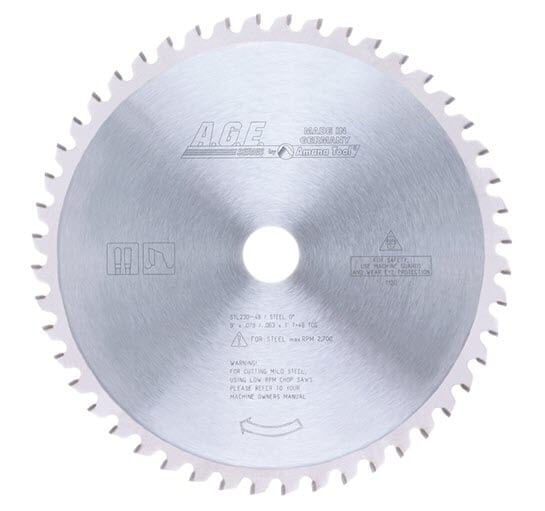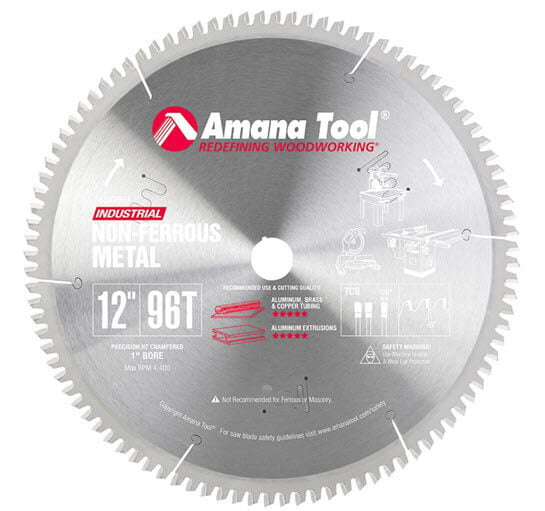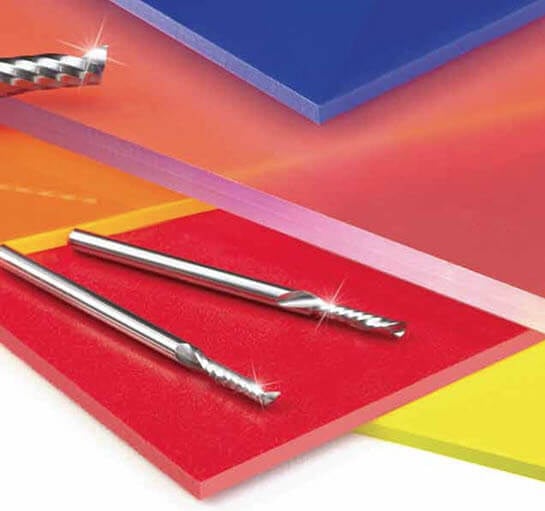
Choosing & Using Steel-Cutting Saw Blades
Steel-cutting saw blades are an absolute must for any metal worker, whether they're a pro or a DIY'er. These blades are tough and precise, designed to cut through various kinds of steel. They're great for many jobs, like cuting through steel studs, steel sheets, metal rods, steel pipes, channels & rebar.
These A.G.E. blades are made of a specially designed carbide grade which resists breakage & lasts longer than standard carbide or abrasive discs. They are the ideal blade for cutting through all sorts of metal due to its unique tooth geometry, special carbide & their chip-limiting steel support which prevents overfeeding.

Why a Specialty Blade for Steel?
Steel is an iron-based alloy, which makes working with it different from working with aluminum and other non-ferrous materials (copper, zinc, lead, etc.).
- Density
Steel: Steel, especially high-carbon versions, tends to be very dense and heavy.
Non-ferrous metals: Metals like aluminum are significantly lighter and less dense than steel. - Hardness
Steel is harder than other, non-ferrous metals. It will quickly wear down an ordinary saw blade.
Aluminum & its cousins are softer, sometimes downright gummy. They require different saw blades. specially designed for aluminum & other non-ferrous metals. - Conductivity
Aluminum and copper are highly conductive, which means you need to cut them at high speeds / RPM to dissipate heat.
Steel is not highly conductive. A.G.E. steel-cutting saw blades are designed to cut only at low RPM, and many of them can only be used in chop-saws. (Not a hand-held circular saw! See below for more safety tips.) - Crossover
While you can use a steel-cutting saw blade for cutting copper, you should not use an aluminum-cutting blade for cutting steel. Ever.

What's Different About A.G.E. Steel Cutting Saw Blades?
The secret sauce is in A.G.E.'s specialty tooth design, which hits the material in 3 different ways. This leads to smoother cuts with minimal splintering.
And, of course, that European micro-grained carbide, which resists breakage & lasts significantly longer than other steel-cutting blades.
How to Use Steel-Cutting Saw Blades
Steel-cutting saw blades are must-haves for cutting steel materials efficiently. Follow this 6-step guide for effective use:
Select the right blade: Choose a blade designed for cutting steel.
Take into account its tooth count. Tooth configuration affects speed, finish quality, and chip control. Fine-toothed for smoothness, or coarse-toothed for speed.
Make sure to match the blade's arbor size to your saw for secure attachment.
Prepare the area: Before use, clear your work area of any hazards. Adequate lighting and ventilation are musts for safety.
Secure the material: Clamp the steel in place. This ensures accurate cuts.
Set the speed: Adjust the speed according to the manufacturer's instructions. Too high or too low can damage the blade.
Keep it cool: For optimal results and to extend tool life, use a mist lubricant system or air cooling.
Begin cutting: With safety precautions in place, lower the blade. Guide it along the marked line. Apply steady pressure.
Pro Tip
Consider your material and desired cut quality when selecting a steel-cutting saw blade. Higher tooth count can give smoother cuts. Lower tooth count removes material faster.
Thin materials like sheet metal work best with a fine-toothed blade. Whereas thick, dense materials like structural steel go better with a coarse-toothed blade.
More Details for Using Steel-Cutting Saw Blades:
- Wear protective gear (e.g. glasses, gloves, ear protection).
- Feed stock properly to prevent kickback.
- Be aware of heat and sparks.
- Clean up after cutting.
- Inspect and maintain regularly.
Maintenance and Care for All Saw Blades
Caring and maintaining any saw blade is essential for optimal performance. Here are a few tips to keep yours durable:
Cleaning: After each use, get rid of any debris or particles with a brush or compressed air.
Storage: Store in a dry, clean place away from moisture or extreme temperatures to prevent corrosion.
Sharpening: While it may be tempting to reuse or sharpen dull blades, it's usually better to replace them with new ones. Dull blades not only reduce cutting performance but also increase the danger of kickback or binding.
Inspection: Check for cracks, chipped teeth, or bent segments before each use.
Lubrication: Apply lubricant to reduce friction and ensure smooth cutting motion.
Studies show that regular cleaning and maintenance can increase a blade's lifespan by up to 30%.
Frequently Asked Questions
1. What factors should I consider when choosing a steel-cutting saw blade?
When choosing a steel-cutting saw blade, you should consider the type of steel you will be cutting, the thickness of the steel, the type of saw you will be using, and the desired cut quality.
2. What is the difference between a blade with more teeth and a blade with fewer teeth?
A blade with more teeth will provide a smoother cut but may be slower, while a blade with fewer teeth will cut faster but may leave a rougher edge. Consider the tradeoff between speed and cut quality for your specific project.
3. Can I use a general-purpose saw blade to cut steel?
While general-purpose saw blades can cut through softer metals, they are not designed for cutting through steel. To ensure clean and efficient cuts, it is recommended to use a specialized steel-cutting saw blade.
4. What is the recommended speed for cutting steel with a saw blade?
The recommended cutting speed for steel can vary depending on the blade and the thickness of the steel. It is crucial to follow the manufacturer's guidelines for optimal cutting speed to avoid blade damage and maximize cutting efficiency.
5. How often should I replace my steel-cutting saw blade?
The lifespan of a steel-cutting saw blade depends on various factors, including the frequency of use and the type of steel being cut. As a general guideline, you should inspect the blade regularly for signs of wear and replace it if it becomes dull or damaged.
6. How can I ensure my safety while using a steel-cutting saw blade?
To ensure your safety, always wear appropriate protective gear such as safety glasses and gloves. Follow the manufacturer's instructions for blade installation and operation. Make sure the workpiece is securely clamped and positioned correctly before starting the cut.





